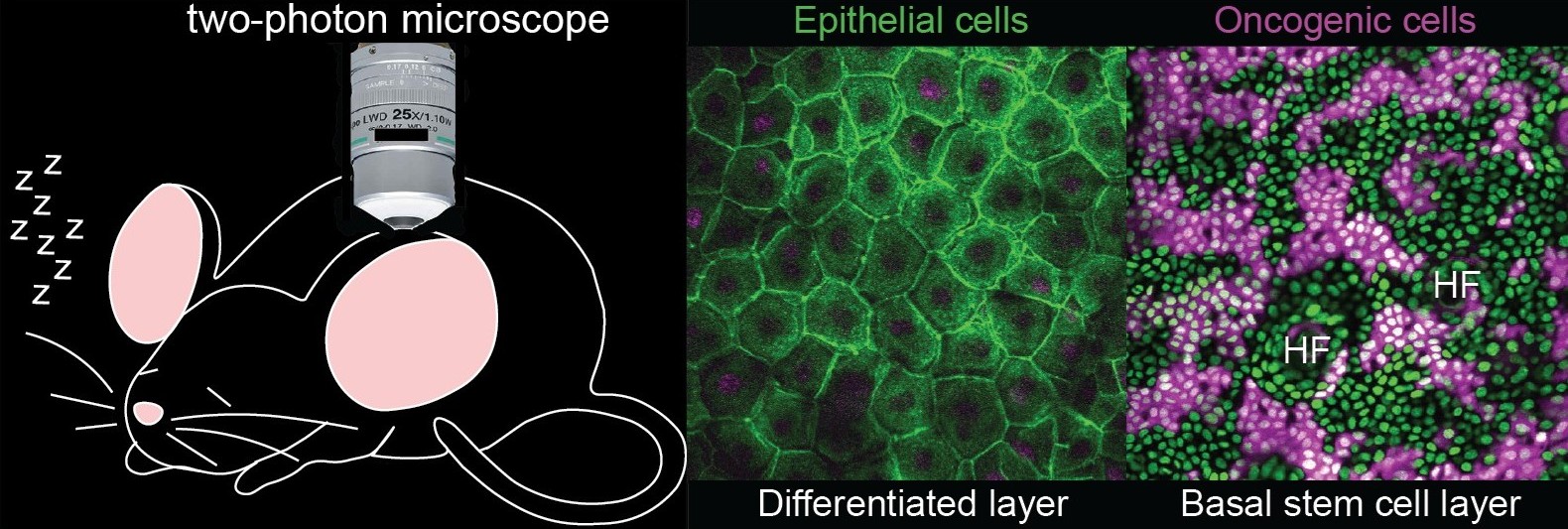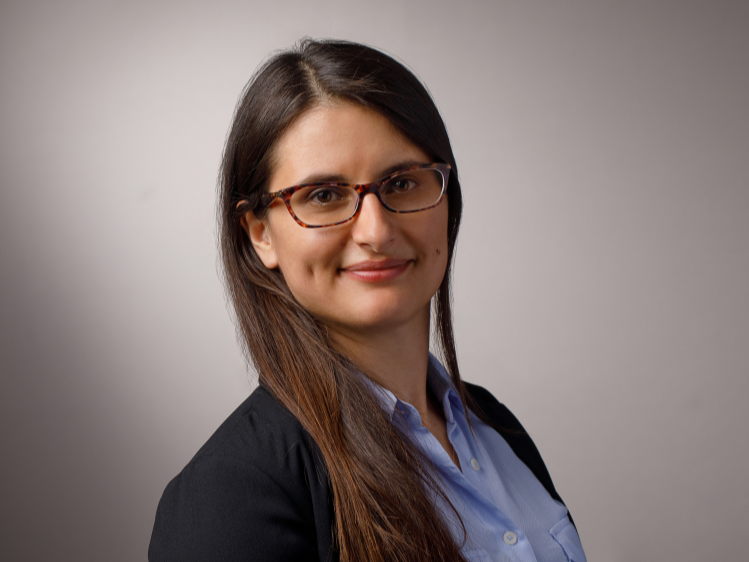What we investigate
Our laboratory investigates how oncogenic and healthy cells interact in genetically mosaic skin to maintain tissue homeostasis. We study how external factors like injury influence these dynamics, aiming to uncover molecular pathways regulating cell competition, with potential implications for improving wound repair and developing new cancer prevention strategies.
KEYWORDS
cell competition, oncogenic mutations, skin regeneration, tumor suppression, two-photon in vivo imaging

Our research in more detail
We focus on understanding how skin maintains balance in the face of cancer-driver mutations. More than 25% of cells in sun-exposed human skin carry mutations commonly associated with skin cancers such as basal and squamous cell carcinoma. Yet, remarkably, the skin often appears and functions normally. This suggests the existence of natural mechanisms that limit the expansion of potentially harmful cells and preserve tissue health.
Our laboratory investigates how healthy (wild-type) and mutated (oncogenic) cells interact within genetically mosaic skin, where both cell types coexist, and how external factors like injury influence these interactions. Injury has traditionally been viewed as a trigger for cancer development, especially in models where all skin stem cells carry oncogenic Ras mutations, a context that does not reflect the patchwork nature of human skin. Our recent findings reveal that injury in mosaic skin can instead activate wild-type cells, allowing them to outcompete Ras-mutant neighbors and protect tissue integrity (Gallini et al., 2023).
We are now expanding our research to explore how other mutations, as well as the effects of aging and chronic wounds, influence these dynamics. By uncovering the molecular pathways involved, we aim to inform new therapeutic strategies that harness the skin's natural regenerative and tumor-suppressive abilities.
Selected publications
SKINTEGRITY.CH Principal Investigators are in bold:
- Xin T, Gallini S, Gonzalez D, Gonzalez LE, Regot S and Greco V (2024). Oncogenic Kras induces spatiotemporally specific tissue deformation through converting pulsatile into sustained ERK activation. Nat Cell Biol, 26(6), 859–867.
- Gallini S, Annusver K, Rahman N, Gonzalez D, Yun S, Matte-Martone C, Xin T, Lathrop E, Suozzi K, Kasper M and Greco V (2023). Injury prevents Ras mutant cell expansion in mosaic skin. Nature, 619(7968), 167-175.
- Pineda CM, Gonzalez DG, Matte-Martone C, Boucher J, Lathrop E, Gallini S, Fons NR, Xin T, Tai K, Marsh E, Nguyen DX, Suozzi KC, Beronja S and Greco V (2019). Hair follicle regeneration suppresses Ras-driven oncogenic growth. J Cell Biol, 218(10), 3212-3222.
